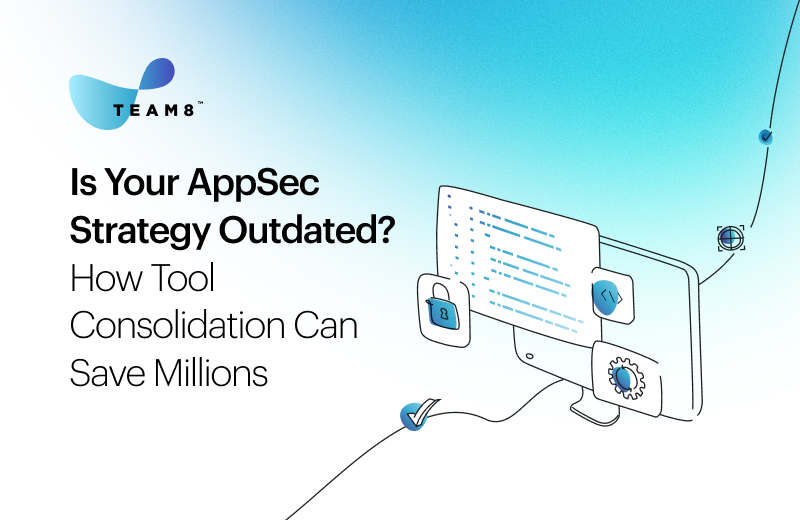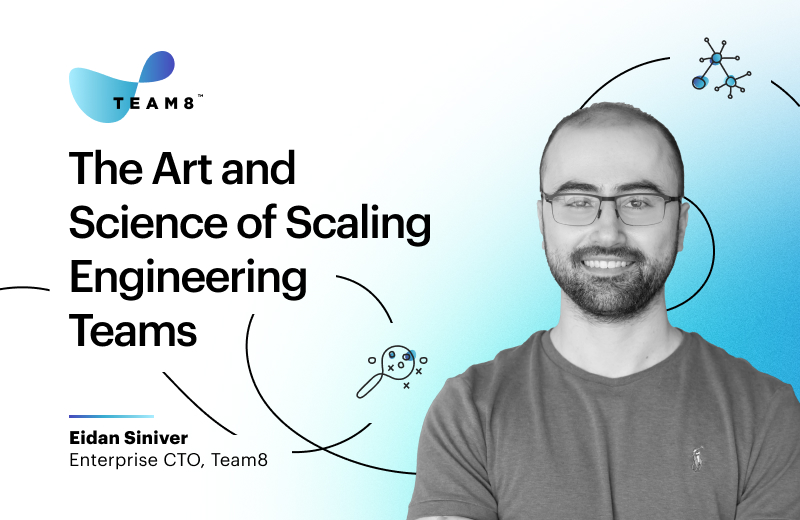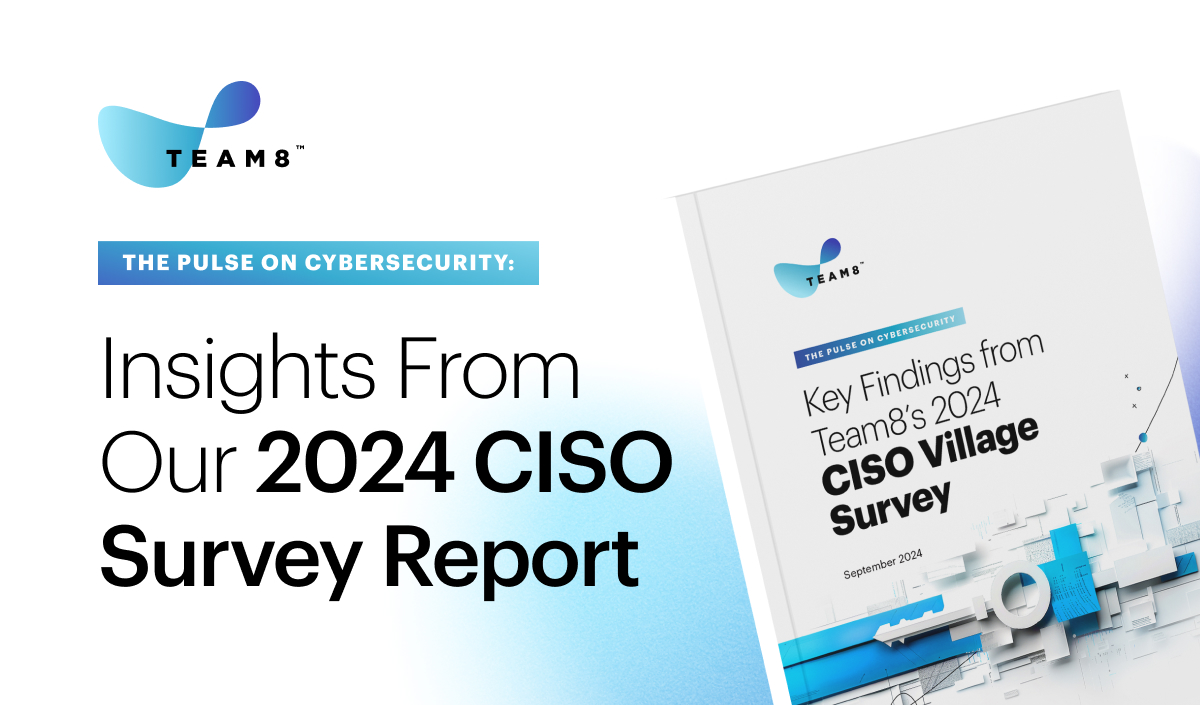As we conclude this year’s annual Team8 CISO Village summit, I wanted to pause to reflect and share some of the thoughts I have gathered. These are based on the many sessions led by world-class experts, conversations with tens of CISOs, and listening to group discussions throughout the summit.
By the Time This is Published, AI has Further Evolved
What struck me most during the summit was how fast, vast, and deep the advancements in AI have been.
When we met last year in Tel Aviv, it was just a couple of months after GPT-3.5 was announced. Since then, the AI transformation has been moving at an unprecedented pace. AI will probably affect every area of our lives in ways we can’t even imagine, and cybersecurity is no exception.
We have been fortunate enough to be joined this year by some of the most notable experts in AI, including Jason Clinton, CISO at Anthropic, Shafi Goldwasser, co-founder of Duality and Prof. at Berkeley; Sella Nevo from Rand, and security leaders pushing AI security forwards such as Tomer Weingarten from SentinelOne, Jeetu Patel at Cisco, and Nir Zuk at Palo Alto Networks.
It is no coincidence that AI is the top-of-mind topic for every CISO we’ve met. The evolving AI technology is a double-edged sword: on one hand, it dramatically augments attacks – we saw some examples during the summit – such as voice cloning, vulnerabilities research “co-pilot”, and hackers’ LLM website – and this is definitely an area to keep an eye on. On the other hand, AI provides defenders with new tools that can make major strides in cybersecurity. During the summit, we saw several examples of cybersecurity companies that dramatically increased their detection and prevention capabilities using the new technology.
Furthermore, as AI becomes a core component in almost every enterprise, it also becomes a target for attacks, and this is a new area that CISOs are becoming more and more busy protecting.
Black Swans are Swimming Our Way
As digitalization increases, the role of cybersecurity becomes intertwined with almost every area of our lives. At the same time, an unbalanced economy and with increasing geopolitical and military tensions, the world we live in today is becoming more aggressive and unpredictable.
It is this climate that makes way for a new generation of sophisticated cyber adversaries, taking advantage of geopolitical instability and increasing the probability of extreme “Black Swan” Cyber events. Almost every expert we spoke with at the summit, including Kevin Mandia, Alex Stamos, Undersecretary for Policy Robert Silvers, and Prof. of Economics. Nouriel Roubini, stressed the rapid pace of escalation on all fronts, with massive global powers fueling unprecedented extremes.
During the summit, we continued our collaborative efforts to develop industry best practices that enhance an organization’s resilience in the face of such events. With the help of our Village, we have made significant progress and will soon share these practices for antifragility in cybersecurity.
CISOs Take on More Responsibility – and Burn Out
All the above make the CISO’s role more challenging. The ever-changing attack vectors, the emergence of new technologies, and tightening regulations place more responsibility on CISOs to act as defenders. On the other hand, they are expected, and also see themselves, as enablers of change.
In the face of Black Swan Events, geopolitical tension, governmental requirements, breaches, and legal liabilities, the words “burnout,” “stress,” and “resilience” were frequently used at the summit this year.
These concepts are not new to anyone working in cybersecurity, but they are intensifying. This, in part, yielded exceptional moments of honesty by members of our community, and was highlighted in professional and personal development workshops at the event.
In our annual CISO Village Survey, soon to be published, we’ll address how the current climate affects CISOs’ well-being, and check if this already results in taking action to protect themselves.
Third Time’s a Charm? Third-Party Risks
This year, there were two more topics that have been proven acute to CISOs (other than AI security). Data Protection, and Third-Party Risks.
With a considerable growth in challenges posed by third-party vulnerabilities and breaches (Snowflake and TeamViewer being recent examples), it doesn’t come as a huge surprise. We are constantly seeing an increase in complexity and dependencies in protecting third-party applications, and there is no doubt that we can expect to see more and more enterprises prioritizing these areas.
One of the most memorable moments of this year’s summit was a brutally-honest conversation between Sudhakar Ramakrishna (CEO), and Tim Brown (CISO) of Solarwinds. They shared how the breach unfolded, how they managed it with their customers, and how they have successfully built the much needed CEO-CISO trust.
Final (Optimistic) Note
I’m an optimist. And while there is a tendency to overweigh the challenges and complexities, I left the summit this year feeling optimistic about our industry. Not only did we meet with incredible startups and witness the power of innovation in creating a safer society and world, but we also learned yet again how powerful this community is.
By emphasizing knowledge sharing, having various peer-to-peer conversations, celebrating small successes, and writing the playbook together, we’re building ourselves stronger as a community. CISOs who attended felt that they have others to rely on and the empowering halo of being part of a village.
Some of the things I’m personally anticipating to see coming out of the summit are a new initiative for real-time information sharing, rooted in collaborative brainstorming we’ve had; and better collaboration between the public and private sectors. Most importantly, we will soon share our shared community principles for antifragility in cybersecurity, so stay tuned for updates.





